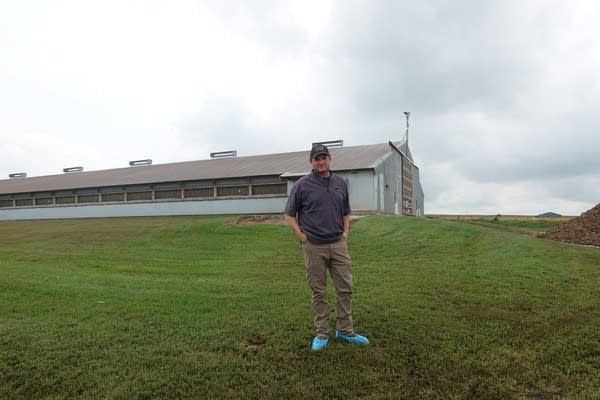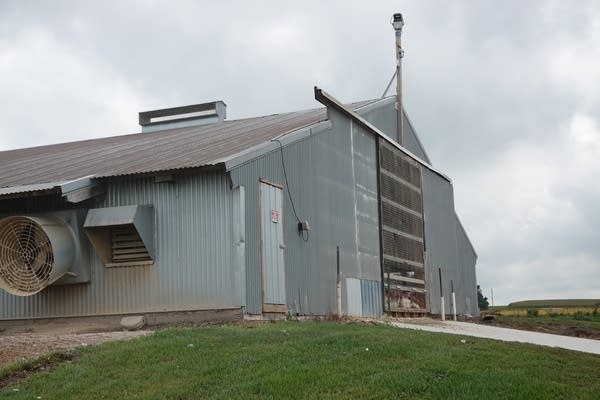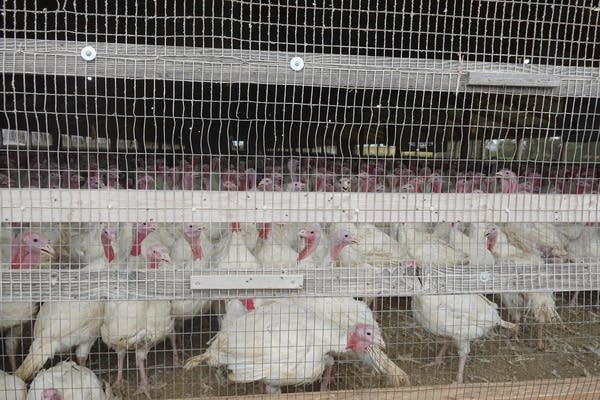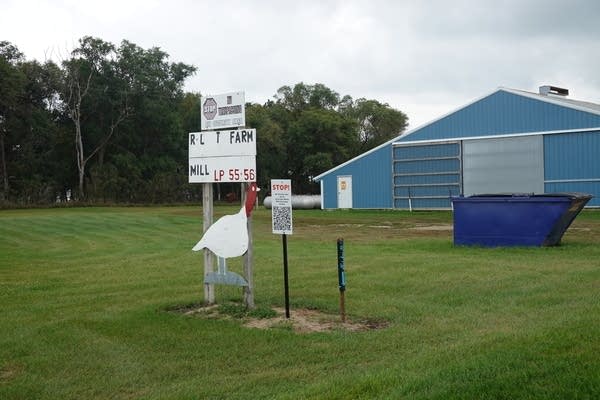ARTICLE AD BOX
This time of year consistently stirs anxiety for turkey grower Matt Herdering.
Ducks, geese and other migratory birds are starting their trip south for the winter. Along the way, they could land near one of his barns. There’s a risk they could be a vector in spreading highly pathogenic avian influenza.
“It terrifies us. It's one of those things where every spring and every fall we live in fear,” Herdering, with Melrose-based R & L Turkeys, said. “And you walk outside and you look up and you see a flock of 200 geese flying overhead, and you just hope today isn't the day.”
He takes safeguards: Wearing boot covers and other gear to keep germs out and limiting who enters his barns. Lately, he’s experimenting with beams of infrared light to scare off wild fowl — with some early success.
There’s a lot at stake: Avian influenza, commonly known as bird flu, can infect thousands of turkeys and chickens in commercial flocks, requiring their depopulation to prevent the spread. So far this fall, the Board of Animal Health has reported four cases impacting tens of thousands of birds in Minnesota, the top turkey-producing state in the country.

The virus has infected Herdering’s flocks before. He’s had to depopulate – in other words kill – the birds he helped raise. Herdering said it’s a gut punch.
“As turkey growers, we take a lot of pride in raising healthy animals,” Herdering said. “And it's kind of the opposite when we see a flock of sick birds that you know you're gonna have to depopulate. It's heart wrenching. It's just, it's some of the worst days of my life.”
Like lightsabers
He’s hoping that new biosecurity measures — a pair of laser projectors affixed atop two barns where there have been outbreaks in the past — will stave off that heartbreak this year. Herdering was among a growing number of turkey growers to apply for grant funding from the state to install the lasers.
At roughly $20,000 a pop, that assistance made a big difference, he said. Herdering installed the lasers that he likens to Star Wars lightsabers peering off the roofs in spring of 2024. Since then, the barns haven’t experienced any reported cases, even though a flock nearby contracted influenza.
He said he’s still not convinced that the technology is the silver bullet but he takes comfort in having another tool to help keep the virus out of the barns.
“When we've got healthy birds in that barn, we think of that barn as being clean. We know those birds are healthy. We know they're doing well,” he said. “We want to keep the dirty outside world away from those clean birds.”

On a recent afternoon, Herdering pulled out his cell phone to put the laser on display. An app allowed Herdering to put the projector into manual mode after it had been set in a randomized pattern, intended to prevent any birds from learning its schedule and sneaking toward the barn.
It cast a faint green light around the fields near the barn. At night, the broad sweeping beam is easier for the human eye to pick up. The infrared lasers are similar to the ones used at airports to keep birds off of runways. The birds don’t like the lights, so they steer away.
“When a duck is hanging out on your farm and it starts talking to your turkeys or your chickens, it gets them sick,” state Sen. Aric Putnam, DFL-St. Cloud, said. “So we’ve got to keep the ducks and the geese away from our barns that have chickens and turkeys in them.”

Putnam leads the Senate Agriculture Committee and this year he helped approve $400,000 to prevent the spread of livestock and poultry diseases. That includes helping to get more of the lasers installed. He said they’ve been popular and effective for those who’ve opted into the cost-sharing program.
“The turkey lasers: it's fun to say, it's a wacky idea,” Putnam said. “But really what they are is an incredibly important way of combating bird flu.”
Turkey lasers gain traction
Shauna Voss is assistant director of the Board of Animal Health, the entity that tracks and responds to cases of avian influenza. She said the lasers are still new so there isn't much data yet on how effective they are. But anecdotal evidence has been positive.
“We're definitely supportive of the producers trying it,” Voss said. “I know the producers that have installed those lasers — they're very expensive — but they've been really happy with them.”

Rep. Paul Anderson is the co-chair of the House Agriculture Committee. The Republican from Starbuck in western Minnesota said a possible budget squeeze could complicate efforts to defray costs of turkey lasers going forward. But he’ll keep an open mind considering the impact they can have.
“It's not a five and dime investment. So it's important, and if we can help them with the cost of that somewhat,” Anderson said, “it's a good way to help out our producers in Minnesota.”
For more farmers, that could mean the force — and not the bird flu — is with them.





 English (US) ·
English (US) ·